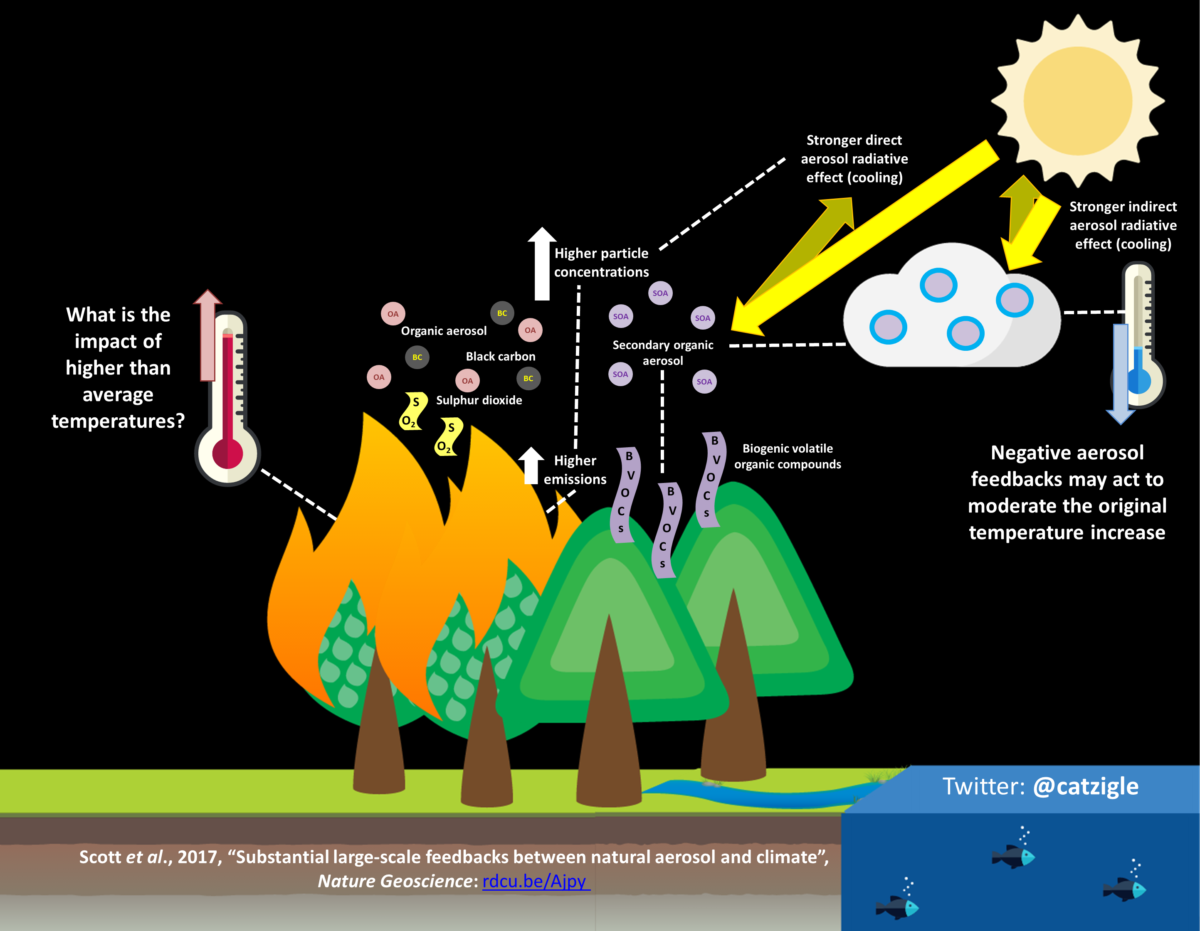Understanding the climate impact of natural atmospheric particles
An international team of scientists, led by LEAF members at the University of Leeds, has quantified the relationship between natural sources of particles in the atmosphere and climate change.
Their study, published recently in Nature Geoscience, shows that the cooling effect of natural atmospheric particles is greater during warmer years and could therefore slightly reduce the amount that temperatures rise as a result of climate change.
Particles in the atmosphere can alter Earth’s climate by absorbing or reflecting sunlight. These particles are often produced by human activities, such as from cars and industry, but there are also naturally occurring particles.
The team combined atmospheric measurements with a computer model to map the effects of two natural particle sources: smoke from forest fires and the gases emitted by trees that can stick together to form tiny particles.
Study lead author Dr Catherine Scott, from the School of Earth and Environment at Leeds, said:
“Natural particles can alter the climate, but they are also strongly controlled by it.
“When it's warmer, plants release more volatile gases from their leaves - these are the gases that, for example, give pine forests a piney smell. Once in the air these gases can form tiny particles. More particles in the atmosphere reflect away the Sun’s energy, which helps to cool the planet.
“This cooling acts to offset some of the temperature rise and is known as a negative climate feedback. We can think of forests acting as giant air conditioners slightly reducing the warming due to greenhouse gas emissions.”
Study co-author Professor Dominick Spracklen, said:
“Overall the response of the climate to an initial warming is to amplify that warming, i.e., a positive feedback. This natural negative feedback might act to offset a small amount of the warming due to climate change but it is not enough to counteract other strong positive feedbacks in the climate system – reductions in greenhouse gas emissions are still required to prevent dangerous levels of global warming.”
“Our research highlights the need for these complex interactions to be well represented in climate models. The latest generation of models being used for future climate projections include more detail about the way that the atmosphere and the land surface interact than ever before – but it’s important that we can isolate the role that these processes are playing as the climate evolves.”
Read the full study here.

